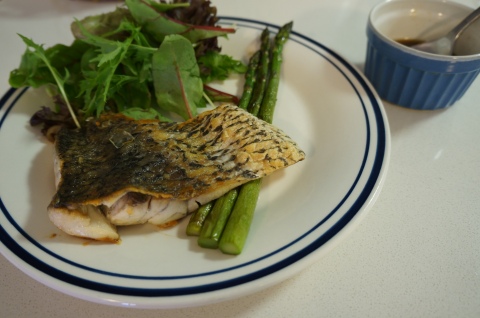
Shio-kōji is a popular item in Japanese kitchens of late, and hence in “western” ones as well. Yusuke and I had wanted to try it for a while, so he brought back a jar on a recent trip to Japan. We subsequently found it at a local Japanese grocery; restocking will not be too arduous!
So, what is shio-kōji? Short answer: kōji with salt.
So, what is kōji? Short answer: fungus.
Here is a longer answer from Makiko Itoh in the Japan Times. (Visit the rest of the article to read more.)
Kōji (Aspergillus oryzae) was probably domesticated at least 2,000 years ago. It is used to make sake, mirin, shōchū, awamori (an Okinawan beverage), rice vinegar, soy sauce and miso – all ingredients that define Japanese food. No wonder that it was declared the kokkin (national fungus) by the Brewing Society of Japan, and the genome was closely protected until 2005. Besides Japan, it is also used extensively in China and Korea to ferment and mature various foods.
To use kōji, spores are mixed into steamed rice (potatoes, wheat and soybeans are also used, depending on the purpose), then allowed to mature for a period of time in a warm environment, about 50 degrees Celsius. The kōji turns the starch in the rice into sugar (a process called saccharification) and releases a variety of fatty acids and amino acids including glutamate, the basis for the “fifth taste,” umami. This kōji-rice mixture is called kome-kōji.
When mixed with salt (shio, in Japanese), kōji is a very tasty cooking seasoning. It can be used for a variety of purposes, but among the most popular is marinating meat, fish, tofu, or veggies.
So far, we’ve used it to marinate salmon, as well as in a few veggie stir fries. Pictured above is the first attempt.
Yusuke began by stir frying the following in sesame oil:
- Asparagus
- Mushrooms
- Shrimp
When the veggies were nearly cooked, he stirred in about 2 tsp of shio-kōji and a sprinkling of black pepper. That’s it!
The concept of umami can be explained in many ways, but for me, it has to do with layers of taste and enhancing the natural flavours of the fresh veggies.




















